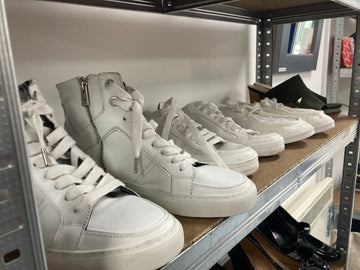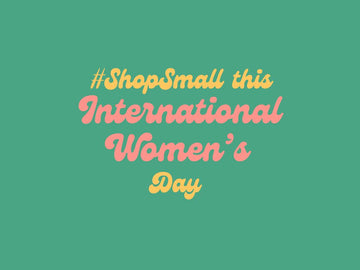2022 Global Fashion Summit: Are Clothing Brands Doing Enough to Reduce Waste?
At the latest Global Fashion Summit, the world of fashion showcased their plans on how to be more sustainable.
There were some interesting revelations. But are they enough? Can we ever really have truly sustainable fashion? Let's take a look.
2022 Global Fashion Summit: What Clothing Brands Are Doing to Reduce Waste
What Happened at the Global Fashion Summit?
If you didn't already know, the Global Fashion Summit is an event that first started in 2009 to talk about fashion in terms of the environment, ethics and social issues.
Taking place at the Royal Opera House in Copenhagen, there were a number of pledges and initiatives revealed in response to the climate crisis and the need to cut down on textile waste.
Shein Admits Waste and Makes $50 million pledge
While Shein acknowledged that producing too many styles could be harmful to the planet, it mainly aims to tackle waste by dealing with second hand items. A representative from Shein said that "Addressing second-hand waste is an important part of the fashion ecosystem that is often overlooked".
Shein have announced they will be working with non-profit The Or Foundation which helps people working in Ghana's largest second hand market - Kantamanto Market.
The Or Foundation's co-founder Liz Ricketts said: "What we see as truly revolutionary is Shein's acknowledgement that their clothing may be ending up here in Kantamanto, a simple fact that no other major fashion brand has been willing to state as yet."
This is an important step in the right direction and yet this is still a drop in the ocean for a company valued at around $100 billion.
Has anything changed right away? We checked Shein's "New Arrivals Page", which they update every day. At the time of writing, there were over 1200 new items.
What Are Other Brands Doing to Combat Waste?
More and more brands are getting involved in the circular economy. Ralph Lauren promised that they would increase the life of their products. This included methods such as making their products timeless that can be worn and loved for generations. They also said they will create more 100% recycled cotton products.
We've all heard of those clothes made using plastic bottles or something similiar. The downfall of these recycled products is that only a low percentage is recycled, the rest is brand new. But if T-Shirts can be created out of textile waste then this could save 20,000 litres of water per kilogram of cotton.
Superdry, Pangaia, John Lewis form a handful of the bigger brands that already use recycled cotton in some way.
Again this feels more like a nod to sustainability than a big step forward. But Ralph Lauren's commitments towards encouraging their customers to make their clothes last longer and pass them down begins a cultural shift towards slower, more sustainable fashion.

Fashion Climate Fund
The Apparel Impact Institute have set up a Fashion Climate Fund worth $250 million including support from Lululemon and H&M. This money is being used to decarbonise and modernise the supply chains that allow our clothes to be sourced, produced and moved around. This makes the whole process of making clothes less carbon-intensive and more efficient.
New Materials
It's always exciting to hear about innovations like pineapple 'leather' as a more ethical and sustainable alternative that creates less waste. The Global Fashion Summit revealed some new 'sustainable' textiles and materials.
One brand looking into this is luxury Danish brand Ganni. Ironically, they admit that they don't identify as a sustainable brand "because at its core fashion thrives off newness and consumption, which is a major contradiction to the concept of sustainability".
They are right in saying this, except this is the definition of fast fashion. Instead, slow fashion thrives off a newness that comes from reinventing outfits, swapping clothes, visible mending and buying second hand. You don't need to buy brand new clothes to be fashionable!
But, moving on from that point, Ganni are developing some new sustainable materials. This does include a mycelium-based leather called 'Mylo', along with something called 'Circulose'. Circulose is a material made from worn-out cotton material. A third material is called Stem which involves a process that uses 100% of the material with no waste.
Founder of Ganni, Nicolaj Reffstrup said: "Fabric innovations will play a crucial role in making fashion more circular as well as creating lower impact materials, but for that to happen brands need to place bets and take risks."
Re-releasing 'Old Stuff' and Making that Stuff Last Forever
Leo Rongone, Bottega Veneta and Marie-Claire Daveu, Kering on stage in a conversation about 'TRUE LUXURY: A PRODUCT DESIGNED TO LAST FOREVER'. Moderated by Fashion Journalist & Editor @tamsinblanchard #Globalfashionsummit pic.twitter.com/Q3bGGGxTpU
— Global Fashion Agenda (@GFAgenda) June 8, 2022
Luxury brand Bottega Veneta will re-release bags that they've previously sold as part of their Bottega Series, with 12 being made available every month.
Bottega CEO Leo Rongone said: “The philosophy of Bottega Series challenges the very construct of seasons – pieces that are timeless do not need to abide by a seasonal calendar,”
“Instead, we are focused on creating remarkable singular objects that last forever. We wanted to showcase the exceptional craftsmanship and materials required to make these pieces and offer some insight into how intrecciato has been used in many ways across several collections.”
Producing high quality items that last is another positive step towards producing less textile waste. Selling old or archival styles means less energy and materials are needed to plan and make 'new' styles. It's still all 'new', though, even if they aren't pumping out 1200 new styles a day. And this won't be accessible for the average consumer.
Second Hand Traceability
Mulberry are one of the many brands turning to Digital IDs to provide traceability but also authenticity when it comes to reselling second hand goods. These IDs come in the form of QR codes which when scanned take you to a web page with all the details about the garment.
This is a bit similar to Teemill, which attaches a QR code to each of its products so they can be returned to be recycled.
In an ideal world where we produce much less fashion and actually make use of take-back schemes to recycle clothes, Digital IDs are a great idea.
But the truth is we are already drowning in a constant tsunami of clothes that have been thrown out. Brands are now having to reposition themselves to justify continuing to sell new clothes. Of course, it's a positive step to try to produce new clothes more sustainably. Yet the most planet friendly clothes are the garments in our wardrobes, warehouses and in charity shops.
We will at some point need to buy some new clothes in the form of underwear, swimwear and other basics and necessities. So making those more sustainably is still helpful in reducing waste.
For everything else, we can buy second hand (where we can).
Did you know we throw out enough clothes each year to fill 459 Olympic swimming pools? 🏊🏊♂️🏊♀️ #fashion pic.twitter.com/c0rwQUgenM
— Green Heart Collective (@NewGreenHeart) June 15, 2022




